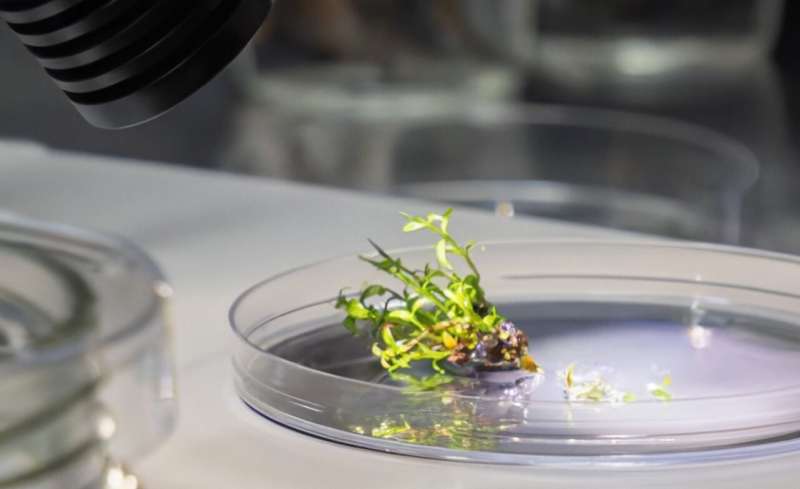This article has been reviewed according to Science X's editorial process and policies. Editors have highlighted the following attributes while ensuring the content's credibility:
fact-checked
trusted source
proofread
Deep freezing native plants at risk of extinction

A process similar to that used to store human embryos is being used by scientists at The University of Queensland to save native Australian plants under threat from the invasive fungus, myrtle rust.
Teams from UQ's Queensland Alliance for Agriculture and Food Innovation and Botanic Gardens of Sydney are cryogenically preserving tissue from some of the most impacted plants of the Myrtaceae family, including native guava and rainforest shrubs and trees.
Dr. Alice Hayward said the spread of myrtle rust has placed hundreds of Myrtaceae species under pressure, with some now at risk of extinction.
"Myrtle rust affects the ability of the worst impacted species to reproduce and some of these species are no longer producing seed in the wild," Dr. Hayward said.
"On top of this, seeds from affected rainforest species often cannot be stored in a seed bank as they don't survive the standard drying or freezing processes.
"To prevent them from being wiped out by the fungus, we are hoping to bring those species into the lab and place them into a frozen but living state using a process called cryopreservation.
"This enables them to be safely secured while other researchers work out how to deal with myrtle rust in the environment.
"To do this we take a tiny shoot, treat it with special protectants and plunge it into liquid nitrogen where it can be stored indefinitely," Dr. Hayward said.
"We can then revive that shoot tip and use tissue culture to multiply it and produce plants that could be put back into the wild.
"We are trying to preserve those species that we know are at most risk of extinction in the immediate future, to capture that biodiversity before it's too late."
The process is not simple. UQ's Dr. Chris O'Brien used the technique to create a cryopreservation protocol for avocado.
"To develop a cryopreservation protocol for each species you must optimize every step of the process to ensure the survival of the shoot tip, which is a lot of work," Dr. O'Brien said.
"That includes a tissue culture system that delivers nutrients and the correct requirements for the plant to survive, as well as how best to treat the tissue to dehydrate it before it can be stored in liquid nitrogen."
Despite the complexity, Dr. Hayward said the conservation work was something she was passionate about.
"For each plant species we need a different tissue culture formulation, as even within a species, different individuals can sometimes require different treatments," Dr. Hayward said.
"We'll be working with a team from Botanic Gardens of Sydney based at the Australian PlantBank at the Australian Botanic Garden Mount Annan to develop protocols for six species.
"Once the protocols are developed, the species will be safely stored in PlantBank's cryopreservation tank.
"We are doing something important that can contribute to protecting the unique Australian biodiversity and environment that we call home."
Provided by University of Queensland


















